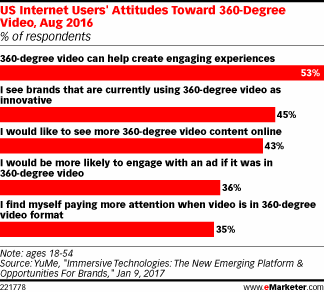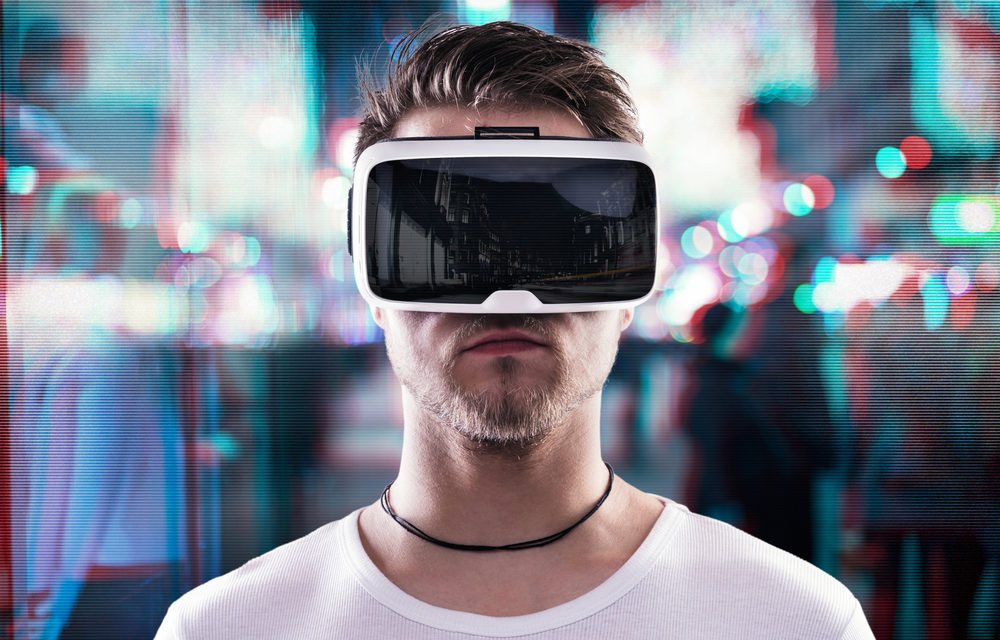Immersive video makes strong impression
A new survey by YuMe indicates that many consumers find 360-degree video a positive and memorable experience, and more than one-third said they would probably be more likely to engage with an ad in the immersive video format. –

Of the many forms of virtual reality, 360-degree video is one of the easiest and least-expensive to produce, distribute and experience. Publishers and platforms including the New York Times, CNN, the Economist, National Geographic and many others are offering 360-video experiences. Cameras to create 360-degree experiences are relatively cheap, and the videos can be consumed with or without a VR headset.
Nevertheless, 360-degree video is not common knowledge among consumers. The YuMe survey found that only 31% of the consumers surveyed said they had heard of the technology. The survey points up one of the challenges of terminology when working with new formats: Fully 47% of the respondents said they were familiar with the term virtual reality—and 360-degree video (a term that far fewer consumers recognized) is simply a form of virtual reality.
Marketers appear to be approaching the technology with caution. A survey by Demand Metric and Vidyard in 2016 found that only 6% of North American marketers said they had created 360-degree videos.
That number is likely to grow as more consumers experience the immersive video—and in turn look for more such content. Last month, Twitter revealed that users on its platform, as well as Periscope, will be able to watch interactive 360-degree live videos from broadcasters. Facebook also has launched Live 360-degree video streaming.
By: Rimma Kats

